Krishnamurti Bhadriraju. The Dravidian Languages
Подождите немного. Документ загружается.


11.2
Earlier attempts
at subgrouping
the Dravidian
languages
491
[± human], but ann¯ı or all¯a is only [−human], e.g.
atanu
1
cepp-in-di
2
all¯a
3
c¯es-
æ
-
.
du
4
[he speak-past-noml all do-past-3m-sg]
‘he
1
did
4
all
3
that has been said
2
(by/to him)’
If Andronov chose all¯a, it would have been a case of retaining a cognate (ell¯a in Ta.
Ma. Ka.), but he chose ant¯a and noted it as a case of loss of a cognate. Again, for
item 31 ‘foot’, he cited Telugu p¯adamu, a learned borrowing from Sanskrit, although
a
.
dugu, a cognate with Ta. Ma. Ka. a
.
di, is the one widely used in Modern Telugu. By his
lexicostatistic study he worked out the time distance between pairs of languages. The
closest sisters, Tamil–Malay¯a
.
lam with a retention rate 73 per cent of cognates, are said
to have been separated by 1,043 years, i.e. the tenth century AD, which is, in any case,
the kno
wn historical date. The greatest
time depth is between Telugu
and Brahui, with
16 per cent retention of cognates indicating a distance of 6,075 years or 4100 BC. What is
surprising is that every language is separated from Brahui by over 5,000 years including
its closest sisters Ku
.
rux (by 5,505 years) and Malto (5,874)! Ku
.
rux and Malto are shown
to be closer to Tamil (4,596 and 4,872 years, respectively) than to Brahui (Andronov
1964c: 184). The fact of the matter is that Brahui has retained only 15 per cent of native
lexical items and the influence of Balochi has been immense, despite its contact with
Balochi being only for 1,000
years (Elfenbein 1987: 219,
229). We still do not have a
measure of how fast borrowed words replace native items. The misleading time depth is
caused by loss of many cognates in Brahui because of heavy borrowing from Balochi and
Indo-Aryan. However, in terms of shared phonological and morphological innovations,
it could not have been separated for more than a thousand years or so from Ku
.
rux–Malto.
Further, the Brahui specialist, Elfenbein, says, ‘...the estimate by “glottochronological”
methods that Brahui separated from the rest ca. 3000 BC, is perhaps not to be taken too
seriously’ (1987: 229). This is enough for Andronov’s glottochronology.
There are two other lexicostatistical studies by Kameswari (1969) and Namboodiri
(1976) that I reviewe
d in 1980 (see Krishnamurti 1985/2001a: 256
–7). There is wide
variation in the dates of separation of individual languages by the two authors, which
I pointed out as evidence for the unreliability of the technique employed; for instance,
‘Tamil and Telugu diverged around 400 BC to AD 400 (Kameswari), 11th century BC
(Namboodiri)’ (Krishnamurti 1985/2001a: 256).
11.2.2 Other proposals
Krishnamurti (1969b/2001a: 114–17, 1985/2001a: 255–7) has surveyed the earlier views
on subgrouping and the reasons for revisions at each stage. In TVB (ch. 4), he proposed
three branches: South Dravidian (treated as South Dravidian I in this volume), Central
492 Conc
lusion: a summary
and overview
Dravidian consisting of two subgroups, Telugu–Gondi–Ko
.
n
.
da–Kui–Kuvi–Pengo–
Man
.
da and Kolami–Naiki–Parji–Ollari–Gadaba; North Dravidian has the same mem-
bers, Ku
.
rux–Malto–Brahui. This proposal was widely accepted by the Dravidian schol-
ars and adopted for about three decades. In the mid 1970s, he found new evidence to
separate the Telugu–Man
.
da subgroup from Central Dravidian and designated it as an-
other branch of South Dravidian, called South Dravidian II or South-Central Dravidian,
changing the erstwhile South Dravidian to South Dravidian I (see Postscripts of chap-
ters 4 and 8 of Krishnamurti 2001a). This revision is widely accepted now, and it
is followed in this book for which exhaustive evidence is presented below in sec-
tion 11.3.
Southworth (1976) discusses in detail the subgrouping of the Dravidian languages
with three isogloss maps and makes some useful suggestions. Basing his assumption on
McAlpin’s hypothesis of Dravidian and Elamite being sisters of one parent language,
Proto-Elamo-Dravidian (which McAlpin has failed to establish), Southworth thinks
that ‘Dravidian speakers moved from somewhere near Mesopotamia to South Asia,
possibly sometime in the third millennium BC’ (1976: 131). Southworth sets up seven
subgroups for Dravidian besides the North Dravidian, namely (1) Kolami–Naiki–Parji–
Gadaba, (2) Kui–Kuvi–Ko
.
n
.
da–Pengo–Man
.
da, (3) Gondi–Telugu, (4) Tu
.
lu, (5) Kanna
.
da,
(6) Toda–Kota, (7) Tamil-Malay¯a
.
lam (1976: 131).
11.3 The subgrouping adopted in this book
The subgrouping
adopted in this book is that
Proto-Dravidian has three main branches.
The first branch is Proto-South Dravidian which split into South Dravidian I and South
Dravidian II (also called South Central Dravidian); the second is Central Dravidian
and the third North Dravidian (see section 1.4). This is the one which most Dravidian
scholars follow currently (figure 11.2a; also see Krishnamurti 2001a: 381, fig. 21.1).
It is also possible to set up an original binary division of Proto-Dravidian into Proto-
North Dravidian and Proto-South and Central Dravidian (see figure 11.2b). There is
lean evidence to set up a common stage of South and Central Dravidian, but generally
a binary division of a speech community is more likely than a ternary. A subsequent
split leads to the two branches
Proto-South Dravidian and Proto-Central Dravidian. The
former splits into South Dravidian
I and II.
In tables 11.1a–d, features from comparative phonology, morphology and syntax are
given a ‘+’ sign indicating innovation and a ‘−’ sign indicating retention within the
specified subgroup or a part of it. A ‘0’ sign says that the feature is either not registered
or not relevant in the specified subgroup. Discussion follows each table and isogloss
maps are presented at the end of the section.
Out of the nine features listed in table 11.1a, F1a, 2 and 3a support a common stage of
Proto-South Dravidian. Features 3c and 4 are exclusive innovations of South Dravidian II.
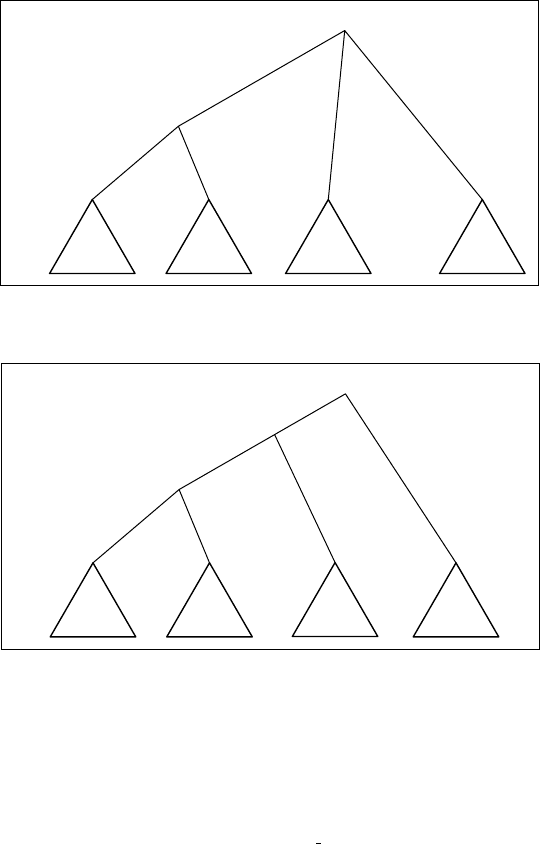
11.3
The subgrouping
adopted in this
book
493
Proto-Dravidian
Proto-
Central D
Proto-
North D
Proto-South D
Proto-South
D I
Proto-
South
D II
(a)
Figure 11.2a Proto-Dravidian with main branches (alternative 1)
Proto-Dravidian
Proto-South and
Central D
Proto-
Central
D
Proto-
North D
Proto-South D
Proto-South
D I
Proto-
South
D II
(b)
Figure 11.2b Proto-Dravidian with main branches (alternative 2)
Only F3b is an innovation restricted to Central Dravidian; F8b and 9 characterize North
Dravidian. F1b, 5 and 8a, on the one hand, and 6 on the other, demarcate smaller
subgroups within South Dravidian I and South Dravidian II, respectively. There are
other minor sound changes without a clear clue to subgrouping like
∗
w > b in Middle
Kanna
.
da which has spread
by diffusion to Ku
rumba, Ko
.
dagu, Tu
.
lu and Ba
.
daga; a similar
sound change has independently taken place in North Dravidian, presumably under the
influence of Eastern Indo-Aryan (section 4.5.4.1). This sound change is also shared by
Brahui and is one of the arguments to say that Brahui had not separated from Ku
.
rux
and Malto until around the eighth century CE. Another sound change which probably
involved diffusion as an important factor from Indo-Aryan is the deretroflexion of
∗
.
n
∗
.
l
to nlin several languages of South Dravidian II, Central Dravidian and North Dravidian
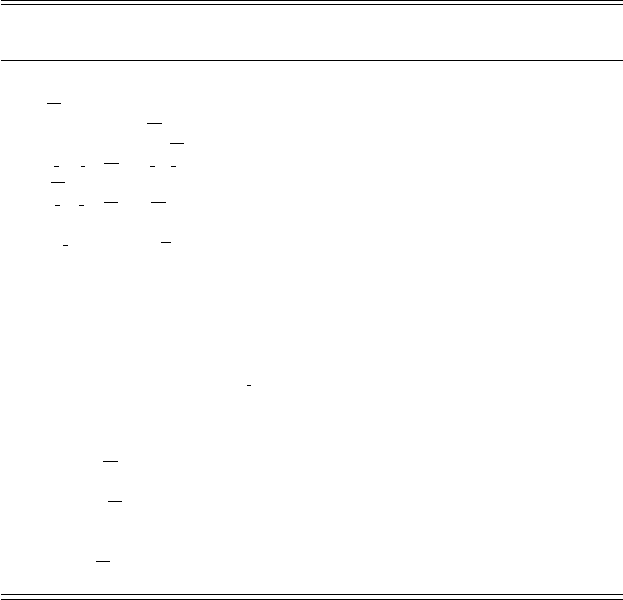
494 Conc
lusion: a summary
and overview
T
able 11.1a
Subgr
ouping supported
by phonolo
gical features
Reference/
Feature(s) = F SD I SD II CD ND remarks
1a. PD
∗
i
∗
u > PSD
∗
e
∗
o / +a
++−−section 4.4.2
1b. PSD
∗
e
∗
o >
∗
i
∗
u/ +a + Ta. Ma. − 0 0 section 4.4.2.2 (1)
2. PD
∗
c >
∗
s >
∗
h > Ø/# ++−−section 4.5.1.3.2
3a. PD
∗
t > r/V V, > d∼r/
∗
Vn
++ +section 4.5.5.3
3b. PD
∗
t > d/V V,
∗
n + section 4.5.5.3
(?retention)
3c. PSD
∗
t > PSD II
.
d/V V −+−−section 4.5.5.3
sporadic
4. Apical displacement −+−−sections 4.4.3,
4.5.7.3
5. (C)¯e-/¯o- > (C)¯a-0+ Kui–
Kuvi
0 0 section 4.4.2.2
6. Centralized vowels ¨e¨o + Ir. To.
Ku
r. Ko
.
d
0 0 0 section 4.4.4.2
7. PD
∗
n- > Ø- + Kol.
Nk.
section 4.5.3.2
Regular in CD;
sporadic in SD
8a. PD
∗
k > c/# V[−Back]C
[−Retroflex]
+ Ta. Ma. −−−section 4.5.1.4
8b. PD
∗
k > x/# V −−−+V = all except high
front vowels;
section 4.5.1.4
9. PD
∗
c > k/# V −−−+V = non-low vowels;
section 4.5.1.3
(sections 4.5.6–7) as it is in many Indo-Aryan languages of central and northern India.
Another sound change exclusively
innovated by Kanna
.
da and inherited by Ba
.
daga,
considered a dialect of Kanna
.
da that split off in about the sixteenth century CE, is
∗
p- > h- > Ø (section 4.5.1.1).
Among the nine morphological innovations in nominals listed in table 11.1b, there
are two that establish South Dravidian I and South Dravidian II as closer sisters, derived
from a common undivided stage, see F10 and 11. F12, 14 and 15 are clear innovations in
South Dravidian I, not shared by South Dravidian II; similarly, F13 is a shared innovation
in South Dravidian II. There are two features which are exclusive to Central Dravidian,
namely F16 and 17. There can be a question of how Telugu happens to have a numeral
derived from
∗
okk- beside the regular items o
.
n
.
du ‘one’ (n-msg), or-u
n
.
du ‘one man’,
¯or-ti ‘one woman’. The last two have become archaic, since Modern Telugu has only
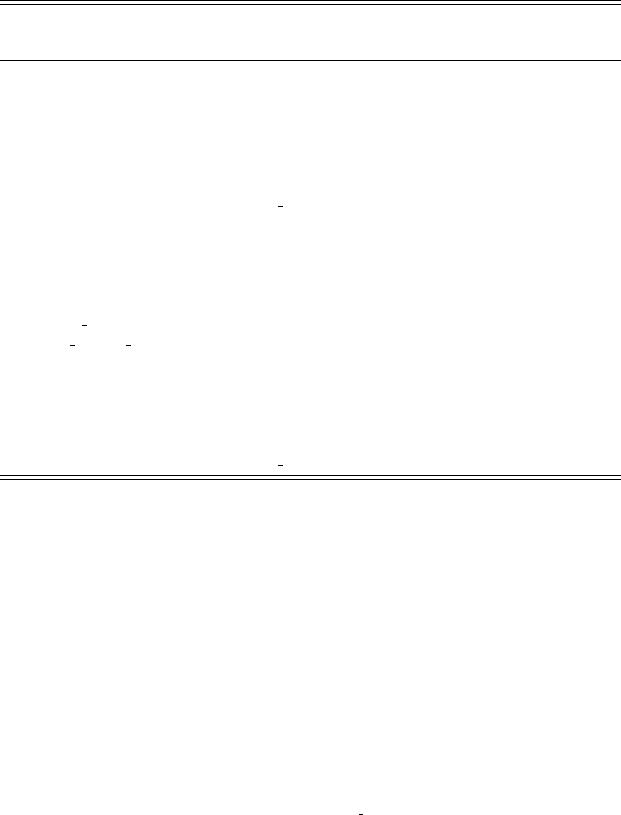
11.3
The subgrouping
adopted in this
book
495
T
able 11.1b
Subgr
ouping supported
by morpholo
gical features
of nominals
Reference/
Feature(s) = F SD I SD II CD ND remarks
10.
∗
˜n¯an/˜nan- ‘I’ beside
∗
y¯an/yan- ‘I’
++−−section 6.4.1.1;
the root vowel:
archiphoneme
∗
˘
¯a/
˘
¯e
11. 2pl pronoun
∗
n¯ı-m >
∗
n¯ı-r ++−−section 6.4.1.2
12. Addition of
∗
-ka
.
l to the
1pl 2pl pronouns, e.g.
∗
y¯am-ka
.
l ‘we’
+ Ta. Ma.
Ko
.
d. Ku
r.
Ka. Kor. Tu.
−−−section 6.4.1.1
13. 1sg obl.
∗
n¯a-, 2sg obl
∗
n¯ı-;
1pl obl.
∗
m¯a-, 2pl obl
∗
m¯ı-
−+−−sections 6.4.1.1–2
14. Creation of
∗
aw-a
.
l etc.
3f sg
+−−−sections 6.2.2–3, 6.2.6
15. Loss of
∗
t in 3m sg
∗
aw-ant,
∗
iw-ant ‘he’
+−−−sections 6.2.2–3, 6.2.6
16. Numerals 1–4 +
derivational markers for
m sg, f sg, neu sg
−−+−sections 6.5, 6.5.1
17. okk- ‘one’ −−(+ Te.) +−section 6.5.1: ‘one’ (c)
18. Loss of –Vn as accusative
marker
Ta. Ma. Ir
Ko
.
d. Ku
r.
−−−section 6.3.2.1
o(k)ka- ‘one’ and its derivatives, ok(k)a-
.
du ‘one man’, ok(k)a-te ‘one woman’, ok
(ka)-
.
ti ‘one thing’. It is possible that the Central Dravidian innovation might have spread
to Telugu through diffusion at some prehistoric time, although, normally, the direction
of borrowing is from Telugu to the Central Dravidian languages. A more plausible
alternative is that the doublet was created in Pre-Telugu and spread to Central Dravidian
at an undivided stage of the latter. There is evidence of several prehistoric borrowings
from Telugu to Kolami–Naiki, e.g.
∗
n¯ır ‘you (pl)’ replaced Pre-Kolami
∗
¯ım, since the
oblique remains im-. This borrowing provides a valuable missing link in the prehistory of
Telugu, because inscriptions and literary records only show m¯ıru which replaced
∗
n¯ı-ru
(<<
∗
n¯ı-m) in Pre-Telugu (see Krishnamurti 2001a: 96–7). F18 is the absence of -Vn as
accusative mark
er in Tamil, Malay
¯a
.
lam, Iru
.
la, Ku
rumba and Ko
.
dagu which I consider
off-shoots from a stage of Pre-Tamil after Toda–Kota had split off in South Dravidian I.
This subgroup within South Dravidian I is supported by other isoglosses, e.g. see F6
above and discussion in section 4.4.4.2.
Out of the thirteen features identified under verbs in table 11.1c, F19, 21 and 31 support
the undivided stage of South Dravidian I and South Dravidian II; I have proposed that

496 Conc
lusion: a summary
and overview
T
able 11.1c
Subgr
ouping supported
by morpholo
gical features
of verbs
Reference/
Feature(s) = F SD I SD II CD ND remarks
19. Causative + past
∗
-(p)pi-ntt- >
∗
-(p)pi-nc-/
∗
-(p)pi-c-
+ Ta.
Ma. Ka
+− −sections 7.3.3–6
20. Tense–voice marking
NP ∼ NPP
+ Ta.
Ma. Ko
.
d.
To. Ko.
− 0 0 sections 5.4.4,
7.3.6–7
21. Paired intr/tr: NP vs. NPP ++−−section 7.3.6
22. Loss of past-tense
marker
∗
-kk
+++−section 7.4.1.6
23. Loss of past marker with
a dental
∗
-t or
∗
-tt
−−−+section 7.4.1.1
24. Generalization of
∗
-tt as
past marker
−+(+) Kol.
–Nk.
0 section 7.4.1.2
25. Non-past -um loss −−−+section 7.4.2.3
26. Perfective participle
∗
-cci 0 ++Pa.
Oll. Gad
0 sections 7.7.1.2
27. -Vt/
.
t as 2sg in finite verbs −−+Pa, Oll
Gad
− section 7.5.3
28. Past relative participle:
past + i
−+−−-a in SD I,
CD and ND;
section 7.7.2.1
29.
∗
cil > (
∗
sil > hil) >
∗
il
‘to be not’
++(Te.) −−section 7.10.6
30. Compound verb
contraction
−+(–Te.) −−Exception
Telugu; sections
7.13, 7.13.2
31. Use of
∗
taH-r ‘give to
1/2 pers’ as auxiliary
++0 0 section 7.14
Table 11.1d Subgrouping supported by morphosyntactic features of adjectives,
adverbs, clitics and syntax
Feature(s) = F SD I SD II CD ND Reference/remarks
32. Loss of several basic
adjectives
−− ++CD and ND lost 8 each;
section 8.2
33. Adverb
∗
˜n¯antu ‘today’ lost −− ++section 8.3
34. Loss of interrogative
particles -¯e,-¯o
−+ ++generalization of -¯a in SD II,
CD, ND; section 8.4.3
35. Use of t¯an ‘self ’ as an
emphatic particle;
alternatively -¯e
+− −−section 8.4.2
36. copular verb
∗
ir- ‘be’
substituting
∗
man-
+− −−The retention is
∗
man- ‘to be’;
section 7.15.1.ff.
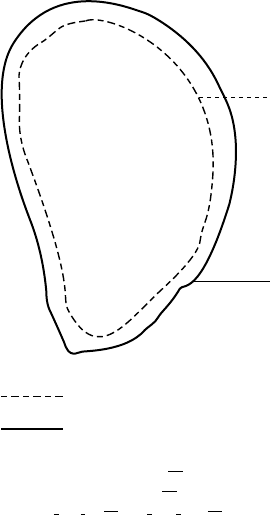
11.3
The subgrouping
adopted in this
book
497
South
Dravidian II
South
Dravidian I
10, 11, 19, 21, 29, 31
1a, 2, 3a
Phonological isoglosses
Morphological isoglosses
F1a. PD
∗
i
∗
u > PSD
∗
eo/ +
∗
a
F2. PD
∗
c > s > h > Ø/#
F3a. PD t > r/V V, > d ∼ r/Vn
F10.
∗
˜n¯an/˜nan- ‘I’ beside
∗
y¯an/yan- ‘I’
F11. 2pl pronoun
∗
n¯ı-m >>
∗
n¯ı-r
F19. Causative + past
∗
-(p)pi-ntt- >
∗
-(p)pi-nc-/
∗
-(p)pi-c-
F21. Paired intr/tr: NP vs. NPP
F29.
∗
cil > (
∗
sil > hil) >
∗
il ‘to be not’ as auxiliary
F31. Use of
∗
taH-r ‘give to 1/2 pers’ as auxiliary
Figure 11.3 Shared innovations of South Dravidian I and II
F31 was a retention in South Dravidian; even then, it shows the togetherness of these
two subgroups since the feature is lost (not attested) in Central and North Dravidian.
In other words, retention supported by solid geographical contiguity could be taken
as a positive factor in subgrouping. Note F20 represents retention in a geographically
close-knit subgroup, which is established by other shared innovations. South Dravidian
I has
∗
il- ‘to be not’ derived from
∗
cil- (again a phonological feature), and Telugu, by
diffusion, shares this feature in l¯e-(<
∗
il-a-) ‘to be not’ with loss of c-. through the
intermediate stages of
∗
h- <
∗
s-. The generalization of
∗
-tt- as the past marker (F24)
distinguishes South Dravidian II, with the isogloss also spreading into some languages
of Central Dravidian. F30 is typically noticed in South Dravidian II, with the exception
of Telugu. It establishes Ko
.
n
.
da–Kui–Kuvi–Pengo–Man
.
da as a minor subgroup within
South Dravidian II.
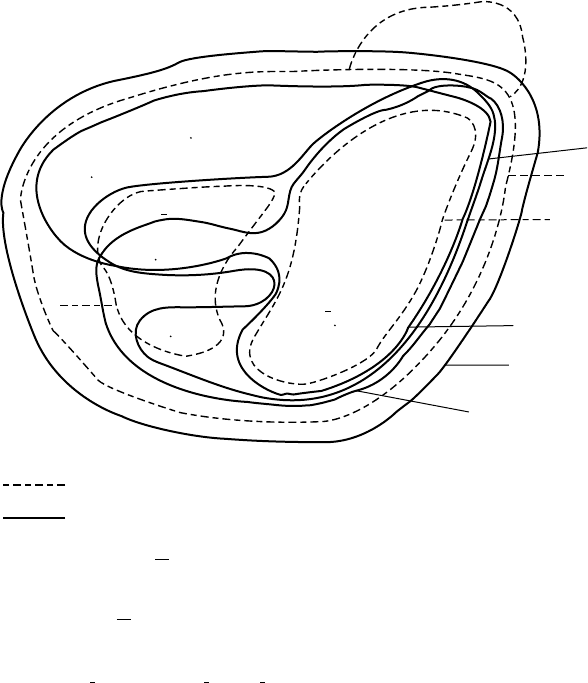
498 Conc
lusion: a summary
and overview
Telugu
Tamil
Kannada
Tulu
Koraga
Kurumba
Kodagu
Toda
Kota
Malayalam
20
6
14, 15, 35, 36
12
1b, 8a
2
18
Irula
Phonological isoglosses
Morphological isoglosses
F1b. PSD
∗
e
∗
o >
∗
i
∗
u/ +a
F2. PD
∗
c > Ø- (through
∗
s- >
∗
h- not attested directly)
F6. Centralized vowels in root syllables
F8a. PD
∗
k > c-/# V [–Back], C [–Retroflex]
F12. Addition of
∗
-ka
.
l (n-hpl suff) optionally to 1pl and 2pl
F14. Creation of
∗
aw-a
.
l etc. 3f sg
F15. Loss of
∗
t in 3m sg
∗
aw-ant,
∗
iw-ant ‘he’
F18. Loss of -Vn as accusative marker
F20. Tense–voice marking by final
NP ∼ NPP
F35. Use of t¯an ‘self ’ as an emphatic particle; alternatively -¯e
F36. copular verb
∗
ir- ‘be’ replacing
∗
man-
Figure 11.4 South Dravidian I (with the isogloss of F2 overlapping into Telugu)
There is no exclusive feature demarcating Central Dravidian but Kolami–Naiki and
Parji–Ollari–Gadaba emerge as minor subgroups in terms of F24 and 27.
The loss of a dental (F23) and the generalization of
∗
-kk (F22) as the past marker, and
the loss of non-past
∗
-um (F26), distinguish North Dravidian from others.
The five features listed
in table 11.1d give partial evidence for the established sub-
groups. The use of
∗
t¯an as an emphatic marker in addition to the normal
∗
¯e is an
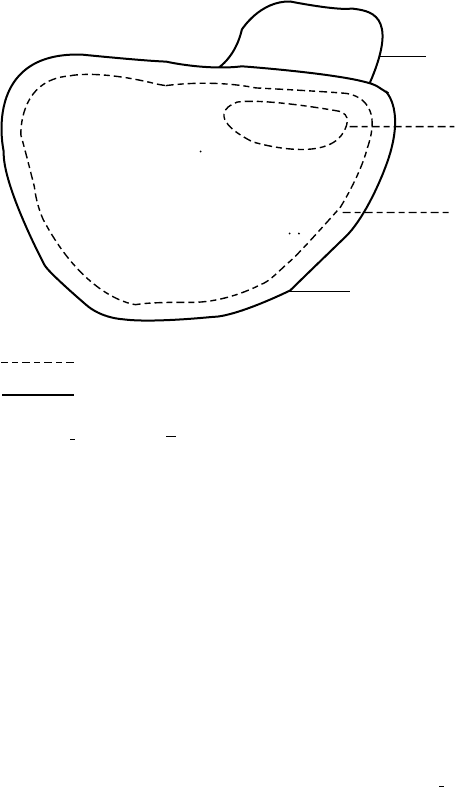
11.3
The subgrouping
adopted in this
book
499
Parji–Ollari–
Gadaba
Gondi
Pengo
Manda
Kui-Kuvi
Konda
Telugu
13, 24, 26, 28, 30
3c, 4
5
26
Phonological isoglosses
Morphological isoglosses
F3c. PSD
∗
t > PSD II
.
d/V V
F4. Apical displacement
F5. (C)¯e-/¯o- > (C)¯a-
F13. 1sg obl
∗
n¯a-, 1pl obl
∗
m¯a-
2sg obl n¯ı-, 2pl obl
∗
m¯ı-
F24. Generalization of
∗
-tt as past marker
F26. Perfective participle
∗
-cci ∼
∗
-ci
F28. Past relative participle: past marker + i
F30. Compound verb contraction
Figure 11.5 South Dravidian II (with the isogloss of F26 overlapping into
Parji–Ollari–Gadaba of Central Dravidian)
innovation of South Dravidian I (F35). All but South Dravidian I show only -¯a as an
interrogative clitic for ‘yes–no’ responses (F34). The loss of several basic adjecti
ves
in Central
Dravidian and North Dravidian (but different lexical items) sho
ws that they
are independent branches (F32). Similarly, the Proto-Dravidian adverb
∗
˜n¯antu ‘today’ is
retained in South Dravidian I and South Dravidian II (F33), but lost in Central Dravidian
and North Dravidian. A very good feature is the replacement of
∗
man- ‘be’ by ir-in
South Dravidian I as a copular verb (F36).
Summary There are several exclusive isoglosses supporting Proto-South Dravidian
and the two branches from
it. There are also de
finite features setting of
f North Dravidian
from the rest. There are relatively fewer shared innovations by Central Dravidian, the
definite ones being F3b, 16, 17 and 32. The fact that Central Dravidian does not share
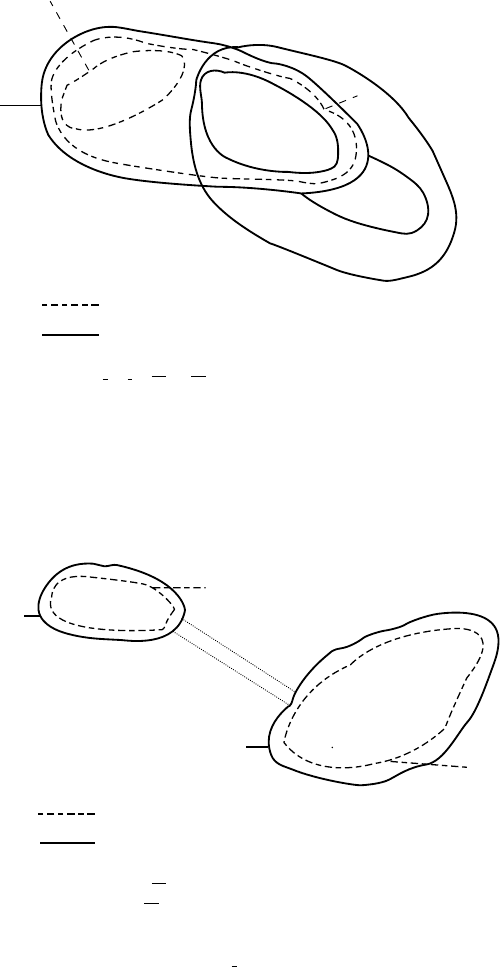
500 Conc
lusion: a summary
and overview
7
Naiki
Kolami
16, 17, 32
Parji
Ollari
Gadaba
27
17
SD II
Telugu
3b
26
Phonological isoglosses
Morphological isoglosses
F3b. PD
∗
t > d/V V, n (could be interpreted as a retention)
F7. PCD
∗
n- > Ø-
F16. Numerals 1–4 + derivational markers for msg, fsg, neusg
F17. okk- ‘one’
F26. Perfective participle -cci ∼ -ci
F27. -Vt/
.
t as 2sg in finite verbs
F32. Loss of several (8) basic adjectives
Figure 11.6 Central Dravidian
23, 25, 33, 34
23, 25, 33, 34
Brahui
8b, 9
Malto
Kurux
8b, 9
Phonological isoglosses
Morphological isoglosses
F8b. PD
∗
k > x/# V(V= all except high front vowels)
F9. PD
∗
c > k/# V(V= non-low vowels)
F23. Loss of past markers with a dental
∗
-t or
∗
-tt
F25. Loss of non-past –um
F33. Independent loss of
∗
˜n¯antu ‘today’
F34. Loss of interrogative clitics
∗
¯e,
∗
¯o
Figure 11.7 North Dravidian
